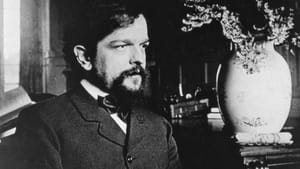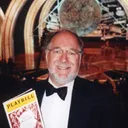Stay in the Loop
BSR publishes on a weekly schedule, with an email newsletter every Wednesday and Thursday morning. There’s no paywall, and subscribing is always free.
Debussy and his devotees
Ticciati and Spano conduct the Philadelphia Orchestra

With Yannick Nézet-Séguin out of town, empty seats were visible at the Philadelphia Orchestra concerts during the second half of February. That’s a shame. Witness the two sets of concerts in which conductors presented provocative programs that were informative as well as beautiful.
Robin Ticciati led four pieces that fit logically with one another. Each shared an emphasis on the sound of long-held chords displaying the timbre and color of different sections of the orchestra. Richard Wagner established the pattern with the Prelude to his 1847 opera Lohengrin, in which shimmering violins, divided into eight parts, lead up to a chorale for brasses. Melody and rhythm here take a backseat to the slow unfurling of sheer sounds.
In 1905, Claude Debussy expanded that idea with his tone poem La Mer. Often compared to impressionistic paintings, La Mer portrays waves rising and falling and dissolving into mist. Color and mood are conveyed by overlapping chords rather than by any specific melody.
Thirty years later, Alban Berg wrote a violin concerto in the same vein. Shifting patterns of tones, rather than catchy tunes, fill the two-movement piece. An elongated crescendo on a single chord recalls the climax of Berg’s earlier opera, Wozzeck. Then the conclusion is a chorale that intentionally duplicates the harmonies that Bach wrote in a hymn from his Cantata No. 6. Violinist Gil Shaham was understated as a soloist, blending in with the Berg’s orchestration rather than trying to dazzle.
The Transylvanian-Hungarian György Ligeti in 1961 took this style to its ultimate with Atmosphères, which totally eschews melody and revels in the texture and density of a series of separate chords. This composition became famous in the classical music world because of its single-minded dedication to this idea, then went on to mass recognition when Stanley Kubrick used it in his film 2001: A Space Odyssey. The virtuosic Philadelphia Orchestra under Ticciati gave both the Berg and the Ligeti sublime interpretations.
Back to Debussy
Robert Spano returned to Debussy a week later with The Sunken Cathedral and Iberia, and offset them with Jennifer Higdon’s blue cathedral and her Violin Concerto. The Philadelphia-based composer admired Debussy’s style and said “I wanted to do it, too,” even when her composition teacher at Curtis said her ideas “broke the rules.” Specifically, she uses what are known as parallel chords, presenting a colorful palette of overlapping sounds.
Both of her compositions utilize these chords. In other ways, they are different. Blue cathedral is a tribute to her younger brother, who died in 1999. She evoked the image of a cathedral’s stained glass windows singing to us, and she included small Chinese bells that sound like stars. This is a mood-piece that commemorates a journey through life. The violin piece was written for Hillary Hahn who was a student of Higdon’s at Curtis. It includes wide leaps for the soloist, and Ben Beilman, also a Curtis graduate, handled them with a dexterity that was unequaled in previous generations of violinists.
The opening piece, Debussy’s Sunken Cathedral, was presented in the transcription for huge orchestra written by Leopold Stokowski in 1926. That transcription includes those parallel chords moving slowly as a cathedral rises from the sea, then sinks slowly until it disappears.
The orchestra did not play the piece as written by Stokowski, however. The conductor-orchestrator took a cue from Debussy’s style of piano-playing, which made use of the sustaining pedal to prolong and blend sounds. Stokowski specified that string-players should move their bows differently, so their movements crisscross irregularly, and that wind players should breathe at different spots. This technique allows the sounds to blend and mix without noticeable breaks. Most conductors nowadays play Haydn, Mozart, et al. in the style of their period. Stokowski transcriptions should be accorded that same courtesy.
What, When, Where
The Philadelphia Orchestra. Robin Ticciati, conductor. Gil Shaham, violin. Wagner, Prelude to Act I of Lohengrin; Berg, Violin Concerto; Ligeti, Atmosphères; Debussy, La Mer. February 20-22, 2015.
Robert Spano, conductor. Benjamin Beilman, violin. Debussy, The Sunken Cathedral; Higdon, Violin Concerto; Higdon, blue cathedral; Debussy, Iberia. February 26-28, 2015.
At the Kimmel Center, Broad and Spruce Streets, Philadelphia. 215-893-1999 or www.philorch.org.
Sign up for our newsletter
All of the week's new articles, all in one place. Sign up for the free weekly BSR newsletters, and don't miss a conversation.

 Steve Cohen
Steve Cohen